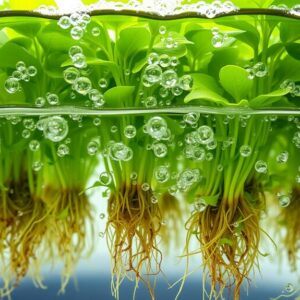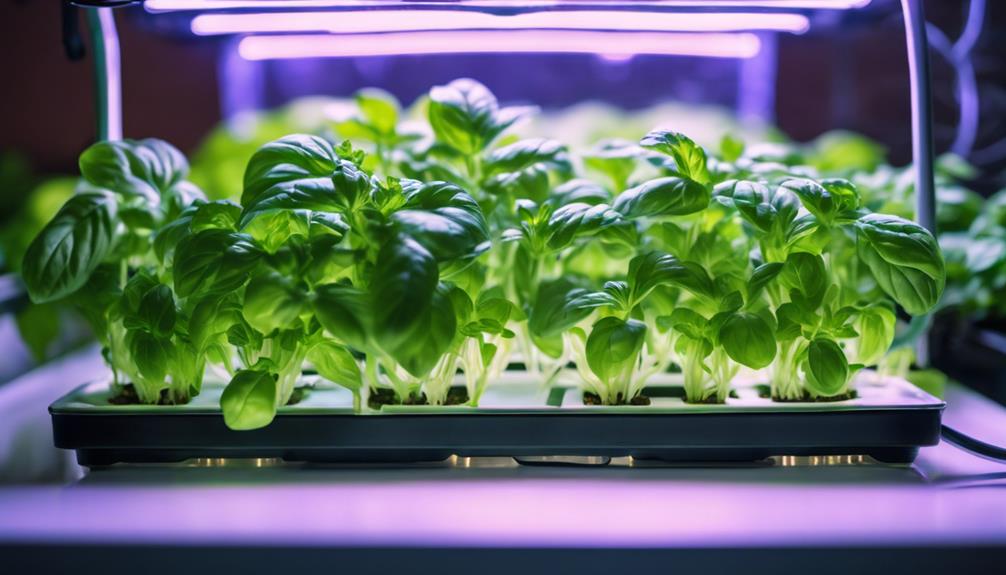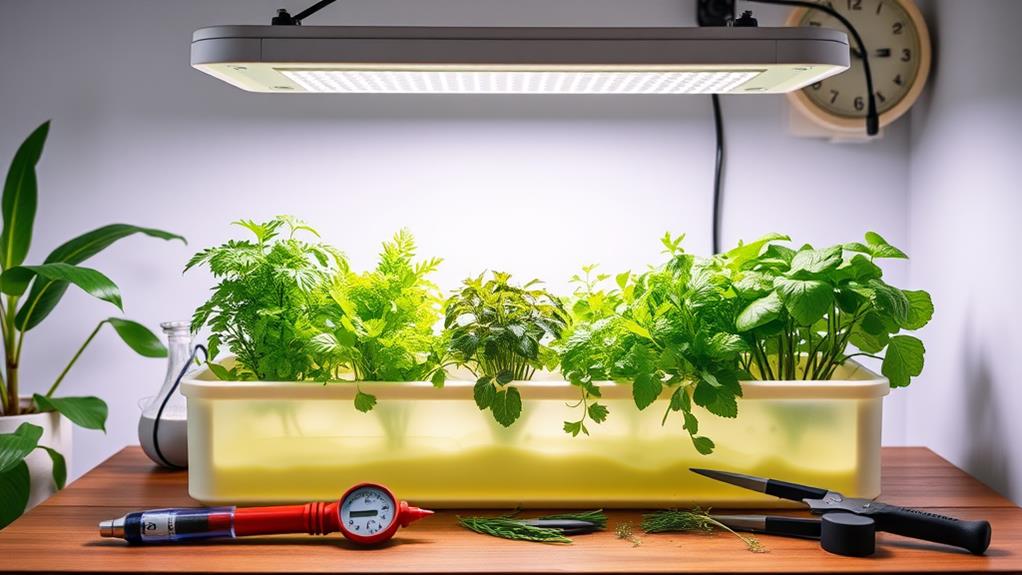Introduction to Plant Physiology in Hydroponics
Plant physiology is the study of how plants function and grow. It covers everything from the way plants absorb water and nutrients to how they produce energy and regulate their internal processes. Understanding plant physiology is crucial for anyone interested in hydroponics, as it gives insights into how plants thrive in soilless environments.
Hydroponics is a method of growing plants without soil, using mineral nutrient solutions in a water solvent instead. Unlike traditional soil gardening, hydroponics offers greater control over the growing conditions, allowing for optimized plant growth and higher yields. This makes understanding plant physiology even more vital, as the success of a hydroponic garden depends heavily on balancing water, nutrients, light, and environmental factors effectively.
The importance of plant physiology in hydroponic systems can’t be overstated. By understanding the basic physiological processes, growers can make informed decisions about nutrient formulations, light setups, and environmental controls. This knowledge helps to create the ideal conditions for plant growth, leading to healthier plants and better yields.

The above picture gives the five disciplines around plant physiology. The details of this discipline are far-beyond this post, but Khan Academy is a great place to learn this if you want to dive deeper into it.
Understanding plant physiology is crucial for successful hydroponic gardening. This knowledge allows growers to optimize nutrient delivery, light, and environmental conditions, resulting in healthier plants and higher yields. Explore how plant processes work in hydroponic systems and improve your indoor herb garden today!
GrowHydroHerbs TLDR
- Plant physiology is essential for understanding how plants absorb nutrients and regulate growth.
- Hydroponic systems provide precise control over plant environments for better yields.
- Root function, light, and nutrient uptake are optimized in hydroponics, promoting faster growth.
- Managing environmental factors like temperature and humidity is key for hydroponic success.
- Plant hormones play a crucial role in regulating growth and stress responses in hydroponic systems.
Comparing hydroponics with traditional soil gardening highlights the unique advantages of soilless systems. Hydroponic plants often grow faster and produce more abundant yields due to the precise control over growing conditions. Unlike soil-based gardening, there is less risk of pests and diseases, and plants can be grown in smaller spaces, making it an ideal option for urban environments or areas with poor soil quality.
The Role of Roots in Hydroponic Systems

Roots play a crucial role in plant health, acting as the anchor and primary nutrient absorber. In hydroponic systems, roots don’t function in quite the same way as in soil-based systems. Instead of spreading out to seek nutrients, they grow in compact systems and directly access nutrient-rich water.
The structure and function of roots in these water-based environments are fascinating. They develop specialized root hairs that absorb nutrients and oxygen directly from the nutrient solution. This direct access to nutrients can lead to faster growth and healthier plants.
Nutrient uptake in hydroponics is a more streamlined process. Roots absorb essential minerals straight from the water, eliminating the need for soil microorganisms to break them down. This efficiency often results in more robust plant growth and better yields.
Hydroponic systems offer significant benefits for root health. The constant availability of oxygenated water means roots are unlikely to suffer from oxygen deprivation, which can be a common issue in overwatered soil gardens. Well-oxygenated roots enhance nutrient uptake, supporting vigorous growth.
One of the standout advantages of hydroponics is the ability to closely monitor and adjust the root environment. Growers can easily check root health, look for signs of disease, and maintain optimal conditions, something much harder to do with soil-grown plants. By understanding and optimizing root function, hydroponic gardeners can ensure their plants have strong foundations for growth.
Water and Nutrient Uptake in Hydroponics

In a hydroponic system, the nutrient solution is the lifeblood of your plants. This solution contains a mix of essential minerals dissolved in water, providing everything plants need to grow. Unlike traditional gardening, where nutrients are extracted from the soil, hydroponics offers a more direct and efficient way to nourish plants.
| Nutrient | Function in Plants |
|---|---|
| Nitrogen (N) | Vital for protein synthesis, leaf and stem growth, chlorophyll production. |
| Phosphorus (P) | Promotes root development, flowering, and fruiting, involved in energy transfer (ATP). |
| Potassium (K) | Enhances water uptake, enzyme activation, and regulates photosynthesis and respiration. |
| Calcium (Ca) | Strengthens cell walls, regulates nutrient transport, and supports root development. |
| Magnesium (Mg) | Central atom in chlorophyll, necessary for photosynthesis, and activates enzymes. |
| Sulfur (S) | Part of amino acids and proteins, essential for metabolism. |
| Iron (Fe) | Crucial for chlorophyll synthesis and electron transport in photosynthesis. |
| Manganese (Mn) | Assists in nitrogen metabolism and photosynthesis, activating enzymes. |
| Boron (B) | Regulates cell wall formation, reproduction, and sugar transport. |
| Zinc (Zn) | Vital for growth hormones, enzyme function, and protein synthesis. |
| Copper (Cu) | Involved in photosynthesis and respiration, activates enzymes. |
| Molybdenum (Mo) | Essential for nitrogen fixation and amino acid synthesis. |
Without soil to retain water, plants in hydroponic systems rely on roots that directly interact with the nutrient solution. This direct uptake means plants get exactly what they need, when they need it. Understanding how to create and maintain the right nutrient solution is key to successful hydroponic gardening.
Balancing the pH and nutrient levels of the solution is crucial. The pH level affects nutrient availability, with most plants thriving in a range of 5.5 to 6.5. Regularly test and adjust the pH to ensure your plants can absorb the nutrients effectively. Nutrient imbalances can lead to deficiencies or toxicities, impacting growth and health. Ignoring or not monitoring the pH or nutrient levels are common mistakes you should avoid!
Consistency is also vital. Regularly replenish the nutrient solution to keep it fresh. Periodic changes prevent the buildup of unwanted salts and ensure a constant supply of nutrients. Monitoring and adjusting nutrient levels based on the plants’ growth stages can make a huge difference in yield and health.
One of the added benefits of hydroponics is the reduced risk of soil-borne diseases and pests. The controlled environment minimizes external threats, allowing plants to focus their energy on growth. With the right care, hydroponically grown plants can thrive and produce abundantly, making the effort well worth it.
Light’s Impact on Plant Growth and Physiology
Plants rely on light to perform photosynthesis, the process that converts light energy into chemical energy. In hydroponics, providing the right type and amount of light is crucial since there’s no natural access to sunlight. Understanding how plants use light can help optimize growth and yields.
By At09kg, Wattcle, NefronusAt09kg: originalWattcle: vector graphicsNefronus: redoing the vector graphics – This file was derived from: Photosynthesis.gif: , CC BY-SA 4.0, LinkPhotosynthesis requires specific wavelengths of light, primarily in the blue and red spectra. Blue light encourages vegetative growth, while red light supports flowering and fruiting. Using full-spectrum grow lights can mimic natural sunlight and provide the necessary wavelengths for all growth stages.
Light intensity and duration also play a significant role. Plants need a balance of light and darkness to carry out essential processes. Too much light can lead to stress and reduced growth, while too little can stunt development. Generally, most plants require 14-16 hours of light followed by 8-10 hours of darkness.
For indoor herb gardens, setting up a reliable lighting system is key. LED grow lights are popular due to their efficiency and customizable light spectra. Position lights to ensure even coverage and avoid hotspots that can damage plants. Adjusting light height as plants grow can help maintain optimal light exposure.
Reflective materials around the plant area can enhance light distribution, maximizing the efficiency of your setup. Using timers can automate the light cycle, ensuring consistent and optimal light periods for your plants.
By understanding and optimizing light conditions, you can create an environment where your hydroponic plants can thrive. Proper lighting not only supports healthy growth but also enhances yields, making your hydroponic gardening efforts more rewarding.
Environmental Factors and Their Effect on Plant Physiology
Temperature, humidity, and air circulation are key factors that significantly impact plant health in hydroponic systems. Maintaining the right environmental conditions helps plants grow robustly and produce better yields.
Temperature plays a pivotal role in plant development. Most plants thrive in a specific temperature range, usually between 65°F and 75°F. Extreme temperatures, whether too high or too low, can stress plants and hinder their growth. Using heaters or coolers can help maintain a stable temperature, especially in indoor setups.
Humidity levels are equally important. Plants rely on transpiration to move water and nutrients from roots to leaves. In hydroponic systems, maintaining humidity between 50% and 70% is ideal for many plants. Too much humidity can encourage fungal growth, while too little can dry out plants. Humidifiers and dehumidifiers can be handy tools for managing these levels.
Air circulation is often overlooked but is crucial for preventing mold and promoting strong plant growth. Stagnant air can lead to a buildup of moisture and disease. Using fans to circulate air keeps plants healthy and helps maintain even temperature and humidity.
Controlled environments offer a significant advantage for hydroponics. By fine-tuning temperature, humidity, and air circulation, growers can create optimal conditions year-round. This control reduces the risk of environmental stress, which can negatively affect plant physiology and growth.
Managing environmental stress involves regular monitoring and adjustments. Temperature and humidity gauges, along with ventilation systems, can help keep conditions in check. Recognizing stress signs like wilting, yellowing leaves, or slowed growth allows for timely interventions to maintain plant health.
Understanding Plant Hormones in Hydroponics
Plant hormones, also known as phytohormones, are chemical substances that regulate growth, development, and responses to environmental stimuli. In hydroponic systems, where plants interact directly with nutrient solutions and controlled environments, these hormones play essential roles.
Among the key plant hormones are auxins, gibberellins, cytokinins, ethylene, and abscisic acid. Each one has a specific function. For instance, auxins promote root and shoot growth, while cytokinins are responsible for cell division and leaf expansion. Gibberellins influence stem elongation and seed germination. Ethylene is involved in fruit ripening, and abscisic acid regulates stress responses like drought tolerance.
Hydroponic systems can significantly influence hormone activity. The controlled delivery of nutrients and environmental factors can be optimized to favor the production and balance of these hormones, leading to healthier plants and better yields. For example, using specific light spectra can enhance auxin production, encouraging robust rooting and vegetative growth.
Promoting healthy growth in hydroponics often involves manipulating these hormone levels. Techniques such as pruning can alter hormone distribution, improving plant shape and yield. Additionally, stress management, like maintaining proper moisture levels and nutrient balance, can help regulate beneficial hormone activity.
Recognizing the signs of hormone imbalances can be crucial. Symptoms like elongated stems, poor root growth, or delay in flowering can indicate issues. Addressing these through adjustments in the growing environment or nutrient solution can help restore balance.
In summary, understanding and managing plant hormones in hydroponics provides the tools to cultivate vigorous and productive plants. Regular monitoring and small adjustments can go a long way in ensuring a thriving hydroponic garden.
Optimizing Plant Physiology for Herb Gardens
Hydroponic systems are incredibly versatile, allowing for the cultivation of a wide range of herbs. Each herb variety may have unique requirements, and understanding these can significantly improve growth and yields.
Different herbs have varying growth cycles and needs. For instance, basil thrives in warm temperatures with plenty of light, while mint prefers cooler environments. Tailoring the hydroponic conditions to suit each type of herb can lead to more robust and flavorful plants.
Adapting hydroponic techniques to these differences is crucial. Customizing nutrient solutions based on the specific needs of each herb type ensures they receive the right balance of nutrients. Regularly checking and adjusting nutrient levels can prevent deficiencies and promote healthy growth.
Monitoring environmental factors like light, temperature, and humidity is essential. Herbs like cilantro require lower light levels compared to oregano, which needs intense light for optimal growth. Using adjustable lighting systems allows for the fine-tuning of light exposure based on each herb’s preferences.
Understanding the growth cycles of herbs is another key factor. Some herbs, such as parsley, may need longer to reach full maturity, while others, like basil, grow rapidly and can be harvested frequently. Timing nutrient delivery and environmental adjustments according to these cycles supports continual and abundant harvests.
Maximizing yields in indoor hydroponic gardens involves regular pruning and harvesting practices. Removing older leaves encourages new growth and prevents overcrowding, which can stifle development. Additionally, consistent harvesting keeps herbs in their productive growth phases longer.
Using companion planting techniques within hydroponic systems can also be beneficial. Pairing herbs that have complementary needs and growth habits can make better use of the available space and resources, leading to healthier and more productive gardens.
Incorporating these strategies can transform a simple hydroponic setup into a thriving indoor herb garden, providing fresh, aromatic herbs year-round.
Leveraging Plant Physiology for Hydroponic Success
Understanding plant physiology is more than just academic knowledge; it’s the foundation for a thriving hydroponic garden. By grasping how plants absorb nutrients, utilize light, and regulate internal processes, you can make informed decisions that enhance growth and yield.
In hydroponics, the close control over environmental factors, such as light, temperature, and humidity, allows for precision cultivation. This control not only optimizes growth conditions but also boosts plant health and productivity. Attention to plant hormones and their roles in growth further fine-tunes this system, leading to healthier and more vigorous plants.
Whether you’re growing an indoor herb garden or larger fruiting plants, the principles of plant physiology guide each step. Tailoring nutrient solutions, adjusting light schedules, and monitoring environmental conditions ensures that plants receive exactly what they need at each growth stage.
Experimenting with different setups and techniques can yield surprising results. By continuously refining your approach and observing how your plants respond, you unlock the full potential of hydroponic gardening. Keep records of what works and what doesn’t, and don’t be afraid to try new things.
The satisfaction of growing your own plants is unmatched, and with a solid understanding of plant physiology, your hydroponic garden can flourish. Embrace the science, stay curious, and enjoy the bountiful results of your efforts.
Frequently Asked Questions
What is plant physiology in hydroponics?
Plant physiology in hydroponics studies how plants grow and function in soilless systems, focusing on water, nutrient uptake, and energy production.
Why is root health important in hydroponics?
Roots directly access nutrient-rich water, making them crucial for nutrient absorption, oxygen intake, and overall plant health.
How do light conditions affect hydroponic plants?
Light drives photosynthesis, with blue light promoting vegetative growth and red light aiding in flowering and fruiting.
What is the role of plant hormones in hydroponics?
Plant hormones regulate growth, stress responses, and development, ensuring healthy growth and high yields.
How do you maintain nutrient balance in hydroponics?
Regularly monitor and adjust pH and nutrient concentrations to prevent deficiencies or toxicities in your hydroponic system.
What environmental factors impact hydroponic plant growth?
Temperature, humidity, and air circulation significantly affect plant health, and controlling these factors optimizes growth conditions.


